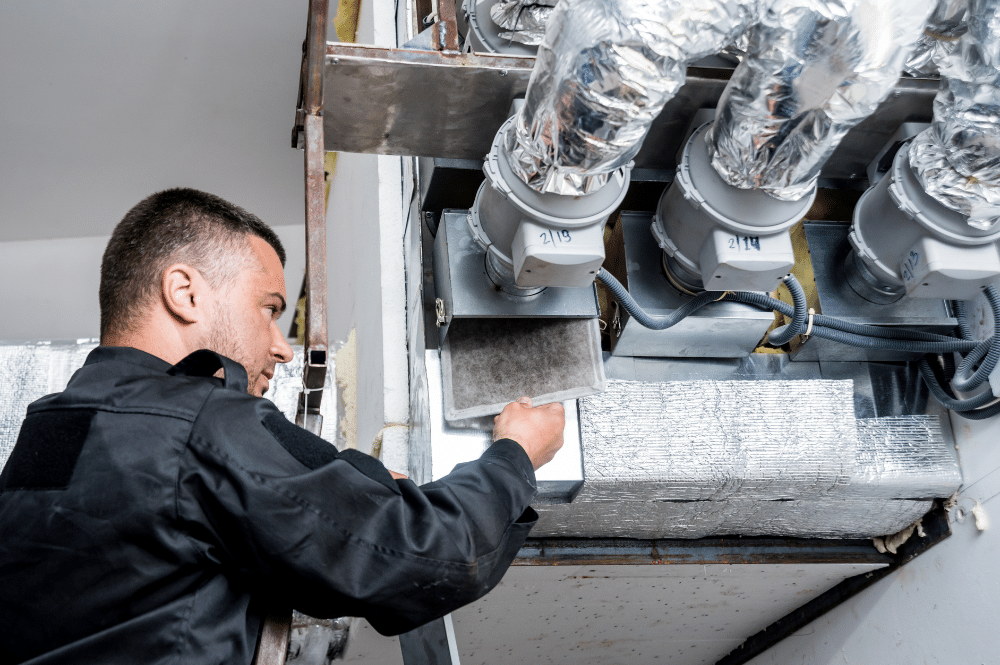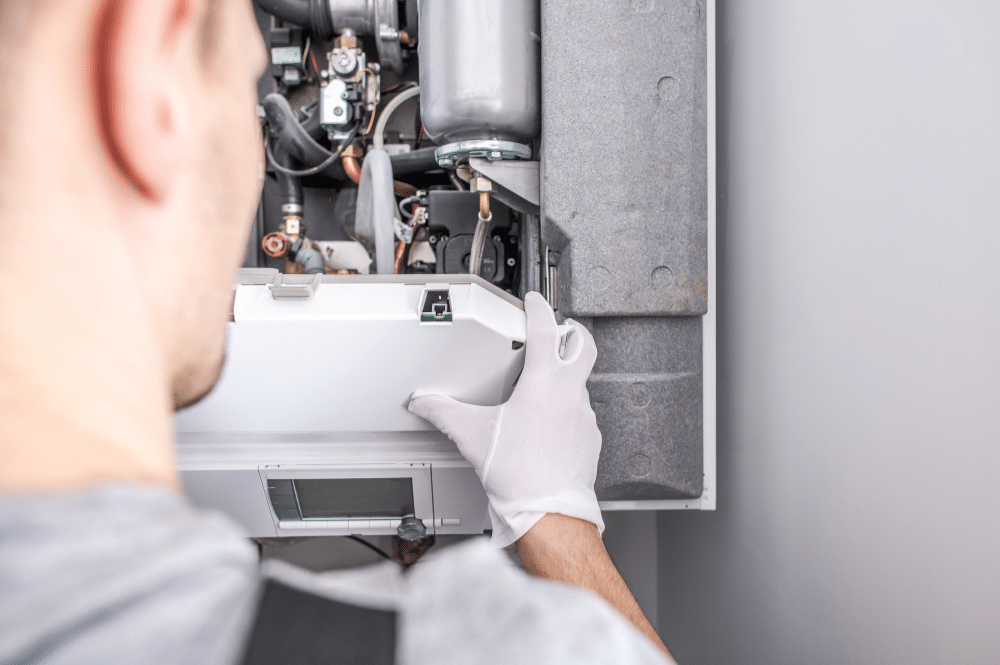Most likely, you don’t think much about your AC condensing unit – until something goes wrong.
An AC condenser unit helps you to manage the humidity and temperature in your home. It enables you to keep things warm in the winter and cool in the summer. Among all HVAC services, homeowners most often need maintenance and repair to keep their homes cool.
Central air is one of the most popular air conditioning systems today. It’s preferable for most homes across the United States.
This kind of unit cools large areas more efficiently compared to a window air conditioner. As a result, they’re prevalent in many homes.
The air conditioner condenser unit is a big part of what makes the heating and cooling magic happen. For a beginner’s guide to the AC condenser unit, read on.
What Is a Condenser?
The condenser is the big box that sits outside of your home. It works differently depending on the time of year.
In the summer, for instance, the condenser collects heat from the home and rejects it to the atmosphere. Alternatively, a heat pump condenser absorbs heat from the atmosphere in the winter to reject into the home.
Either way, the condenser has one primary function – to transfer heat.
If you take a look at your condenser, you’ll see a big fan inside of the grill. That fan helps to aid in the heat transfer process.
There are other important parts of your AC condenser unit. These parts, however, aren’t as visible. For instance, the compressor, the condenser coil, and a variety of other condenser unit parts work together to make your home comfortable.
The condenser coil allows your AC system to transfer heat quickly. It might include aluminum or copper tubing and aluminum fins.
The compressor is the powerhouse of your condenser unit. It pumps refrigerant into the condenser coil in the form of hot gas.
Quick Fact:
You may wonder, “What is another name for a condenser?” Often, you will hear people called a condenser a central air unit.
Condensers in Action
Your AC condenser performs three important functions. Firstly, it enables your HVAC system to function at peak performance.
The compressor feeds on cooling from inside the condenser unit. It then adds pressure to the coolant to increase the temperature of the refrigerant.
This process makes it easier for it to transfer heat from inside your home. It’s also an important initial step in the cooling process. The refrigerant processes the heat in your home before it passes from the evaporator coil as gas.
The condenser coil doesn’t just throw the hot gas away, however. Your condenser recycles it. Part of this job includes eliminating superheated refrigerant gas, condensation, and sub-cooling refrigerant.
Next, the refrigerant will enter the compressor. There, its temperature will rise, and the refrigerant will compress.
The condenser will lower the temperature of the refrigerant. Now, the condenser can convert the refrigerant back into a liquid.
The refrigerant will continue to the condenser coils. The big fan you saw on the inside of your AC condenser unit will then cool the refrigerant off. As it does, it will release excess heat into the air.
The refrigerant continues this process repeatedly. All the while, the condenser will keep the refrigerant cool so that it can continue to draw the heat from your home.
AC Condenser Unit Tips
If you want your HVAC condenser unit to keep you comfortable, you need to give it some TLC. Regular maintenance is the simplest way to keep your HVAC system running at peak efficiency.
At a minimum, you should change your air filter monthly or quarterly based on filter type. However, you may want to change your filters every month during peak usage in the summer and winter.
If you let your filters get dirty, the blockage will slow down the flow of air. In turn, the AC condenser motor will have to work harder and the evaporator coil may get too cold and ice over. As a result, it will have trouble cooling down incoming air.
Also, sweep away debris such as falling leaves at least once a week. You should also trim any bushes or plants so that they don’t come within two feet of your condenser. The condenser needs room to breathe.
You might also want to install a smart thermostat. With one, you can lower your utility bill.
In the summer, you can use a smart thermostat to turn up the air conditioning when you’re not home. You can also program it to return the temperature to a comfortable level an hour or two before you return.
Spotting Signs of Trouble
There are a few signs that might suggest there’s a problem with your AC condenser unit. Typically, you’ll see condensation coming off your AC condenser unit in the summer. However, you might see a much larger amount of fluid leaking from the cabinet if there’s a problem.
You may also have a problem with your AC condenser if you find that you have trouble cooling or heating your home. Loud or strange noises can also indicate a problem with the unit.
These are all signs of a serious problem. If you notice these kinds of issues, it’s important to call an HVAC professional right away.
Often, homeowners pay little attention to their AC condensers. However, it’s important to care for your condenser to keep it working properly. If it’s been some time since you’ve had maintenance performed on your AC condenser unit, it’s a good idea to give your friendly local HVAC expert a call at Schneider Mechanical!
Trust Us to Keep Your AC Running Smoothly!
Now that you know more about the AC condenser unit, you need a trusted service professional to keep your central air in tip-top shape.
Schneider Mechanical has served home and business owners in greater Austin for more than ten years. We understand how important it is to keep structures warm in the winter and cool in the summer.
You can count on us to keep your HVAC system in excellent condition so that you can enjoy the full use of your property. Whether you need an annual checkup, repair, or maintenance, we’re here to serve your needs.
Contact one of our friendly representatives today at (512) 695-4323 or connect with us online.




